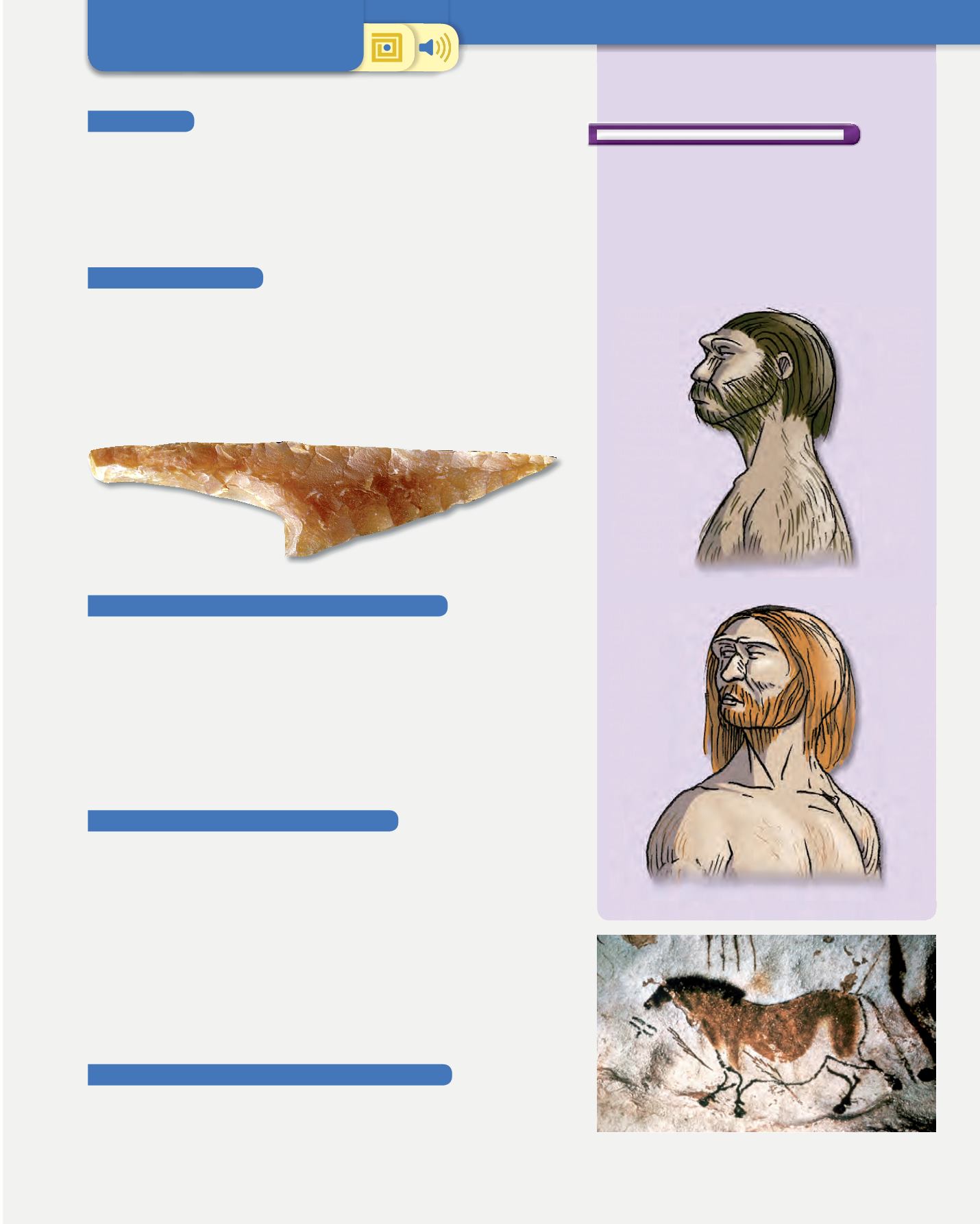
1
1. Prehistory: the Paleolithic Period
21
Prehistory
❚
Prehistory is the beginning of the history of the human race.
❚
It began with the appearance of the first human beings and ended
with the discovery of writing around 3500 B.C. Prehistory is divided
into periods according to the technological advances: the
Paleolithic
Period
, the
Neolithic Period
and the
Bronze and Iron Ages
.
The Paleolithic Age
❚
The
Paleolithic Period
began when hominids learnt to make tools.
The used stone (knapped), wood and bone to make bifaces, stone
chips, scrapers, perforators, arrow heads, harpoons, javelins, spear
throwers and needles.
❚
The
Epipaleolithic
was a period of transition between the Paleolithic
and the Neolithic Age.
Economy and Society in the Paleolithic Age
❚
During the Paleolithic Age, human beings were
scavengers
(they
lived from hunting, fishing and gathering wild fruit). They lived at
subsistence
level (they had just enough to survive).
❚
They did not stay in one place, but were
nomads
(they moved around
in search of animals to hunt). They lived outside in huts or sheltered
in caves. They formed small groups that shared family ties, called
clans
(with a common ancestor). Various clans joined together to
form a
tribe
.
Culture and art in the Paleolithic age
❚
Religion appeared when humans tried to find explanations
for inexplicable natural phenomena. The first known religious
manifestations were
burials
. The objects put beside the corpse in
the tomb are called
grave goods
.
❚
During the Upper Paleolithic, works of art were produced such as the
figurines of women called
Venus
(which are associated with fertility)
and
cave paintings
(which are associated with magic rituals). There
were two styles of cave paintings: in the Franco-Cantabrian area,
they were
polychrome
and
naturalistic
; in the
Levantine
area of
the Iberian Peninsula, they were
monochrome
and
schematic
.
The Paleolithic age on the Iberian Peninsula
❚
The most important archaeological sites on the Iberian Peninsula
are
Atapuerca
(remains of hominids such as
Homo antecessor
) and
Altamira
(Franco-Cantabrian style cave paintings).
❚
Hominisation
refers to the series of changes
that occurred in some ancient primates and
led to the appearance of modern humans.
❚
This process took millions of years and
eventually all the species of hominids became
extinct apart from one,
Homo sapiens
.
THE PROCESS OF HOMINISATION
Homo erectus
Homo neanderthalensis
1
KEY CONCEPTS
Painting of a horse in Lascaux cave (France)


